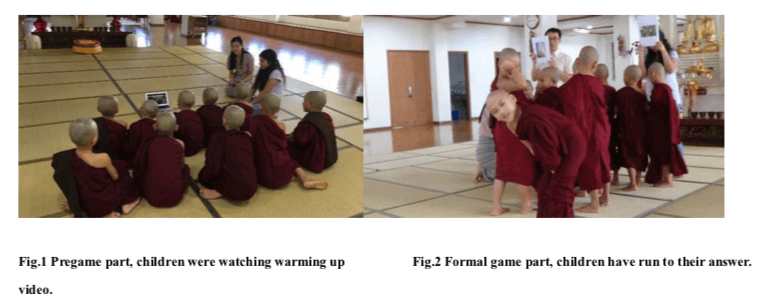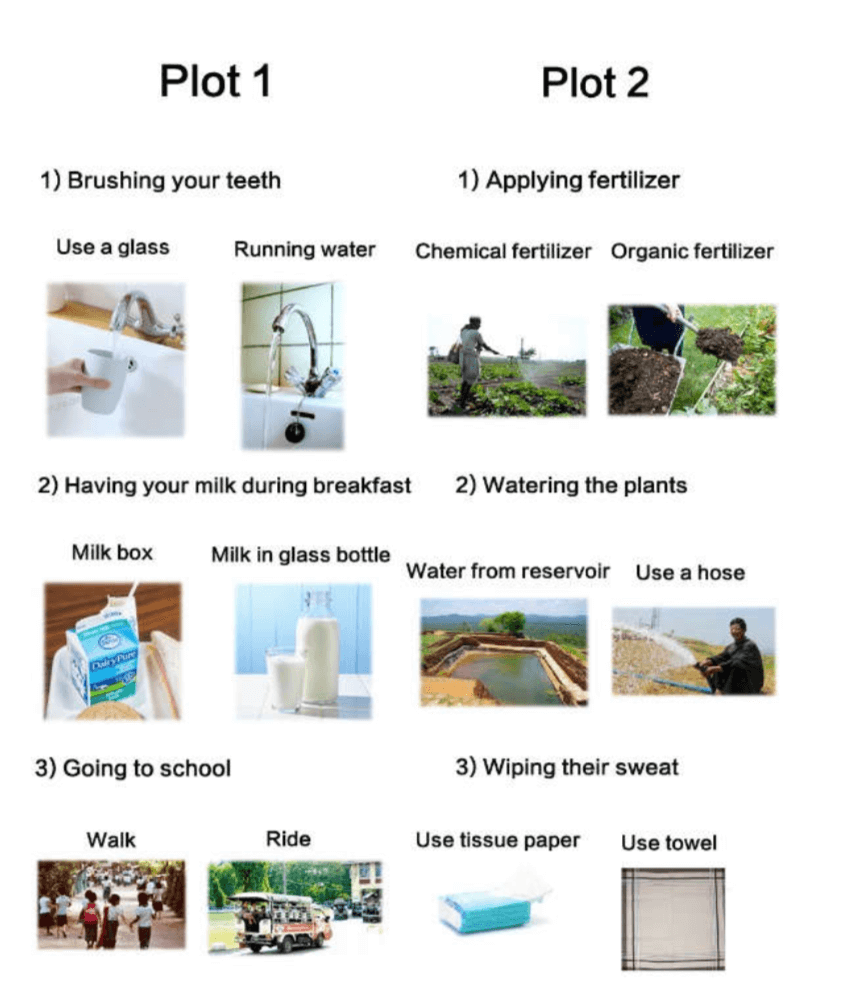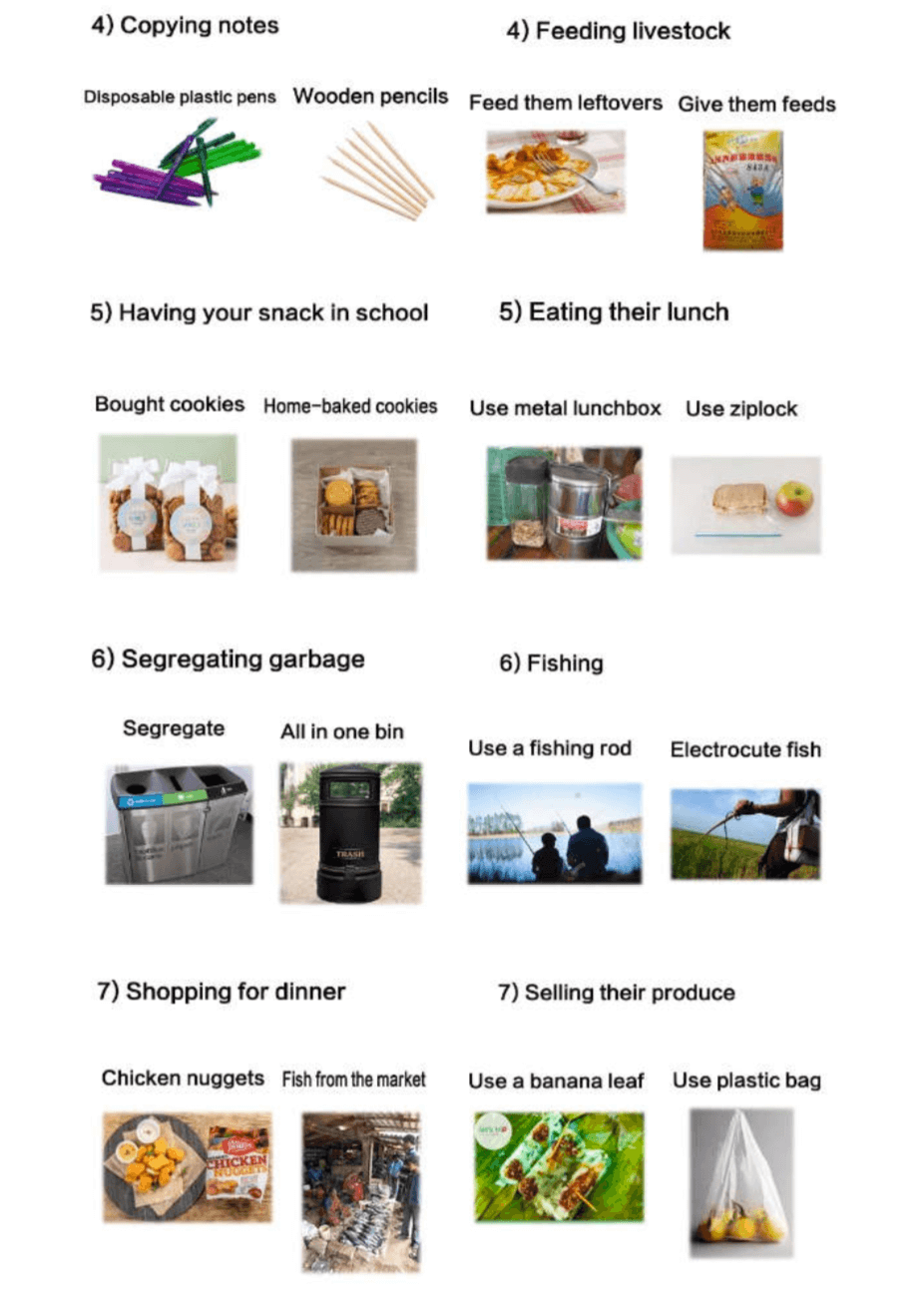Keep Recycling in Mind- Designing an Interactive Game with Children to Promote Environmental Awareness- From Psychological View
Paper by Cai Meng Tong of Winter School 2019
Keep Recycling in Mind-Designing an Interactive Game with Children to Promote Environmental Awareness- From Psychological View
Abstract
In this paper, we described the challenges proposed by local environmental problems. Based on psychological point of view, here we design an interactive game aiming at increasing environmental awareness especially the recycling awareness of local people and promoting a more positive dialogue between local people and our earth. Recognizing the power of young generation, our group targeted on preschool children, and emotional, cognitive and social impact on children are all take into account in designing this interactive game.
1. Introduction
“Myanmar is biogeographically and biologically one of the most exciting places in Asia,” says Peter Leimgruber, a biologist at the Smithsonian Conservation Biology Institute in Front Royal, Virginia. After 2 decades of international sanctions for human-rights violations, Myanmar lags behind neighboring countries in building an infrastructure. As a result, it retains some of the largest intact forests in Southeast Asia. With 1100 species, the diversity of Myanmar’s birdlife exceeds that of the United States and Canada combined. The country’s Asiatic elephant population—ranging from 1350 to as many as 5300 individuals according to various estimates—is second only to India’s (Schmidt, 2012).
On the other hand, the coastal area of Myanmar, like its neighboring South-east Asian countries, is endowed with the world’s richest ecosystem, characterized by dense mangrove forests. These coastal areas provide many of the country’s economic benefits, and high-level resource exploitation occurs (Kirkley & Kirkley, 2005). In a word, nature was generous in giving the Myanmar plenty of resources: fertile soil, along with a climate that is mostly moderate, much of land area can be used as farmland. However,environmental crisis is destroying this land even the health of people lived here for generations. Villagers subsist on hunting, illegal logging slash-and-burn farming that depletes topsoil. Wasting resources and too much untreated garbage lead to the depletion and degradation of the forest and marine ecosystem.
Even though the local people has barely begun to get serious about recycling, too much trash have not been handled properly, using plastic bags happens everywhere in the city, illegal electric fishing gear has caused 40% of known baiji deaths during 1990s.
1.1 Challenge of the of current environmental education
Myanmar faces environmental problems of critical importance to its development, and the need for more environmental education (EE) programs in its schools is urgent. The worldwide growth in environmental awareness over the past thirty years has been accompanied by a parallel recognition of the need for EE. Government policies concerning the environment and sustainable development are likely to both guide and depend for success upon the knowledge and support of the citizenry. This is true in Myanmar (formerly Burma), where interest in environmental education has become stronger over the past decade.
After investigation and survey about the current state of environmental education in Myanmar,
we found that there are still some limitations: firstly, the essential task of the existed EE is only factually informative which usually assess the environmental harm; Furthermore, while EE is usually taught as a co-curricular activity in middle and high schools or open to adults. When we visited Moeyungyi wetland wildlife sanctuary, person in charge of this sanctuary told us his experience about providing EE to local people. The local villagers stuck firmly to their old ways of life. They make living by fishing, making fuel from forest. Even though they were provided round trip fare and some presents, few people came to the EE workshop. The present project focuses on alternative sites for transformational environmental children education (ECE), especially preschool age children.
1.2 Environmental education targeting on preschool children
In operation level, we hope this EE can be propagated in an acceptable way. It is very important to recognize the critical stage of children to prim and implant the environmental, recycling awareness to them (Tsai, Wen & Kang, 2015). According Jean Piaget's account of the development of the individuals, preschool age children (about 2-7 years old) begin to learn language. Thus they can communicate with others, and thence to form internal representations, or “models”, of external reality. This thinking has not developed all at once, they can perform the elementary functions of thoughts and form internal representations of things, hence recall the past and project the future. In this case, of course, the child is not consciously aware that he has acquired knowledge of outside reality. Certainly they are not conscious of the representation form in which their knowledge, and their procedure for acquiring it, may be represented. As in the case, they are implanted with the environment friendly awareness without knowing it.
1.3 Game-based learning for environmental education
Playing game have special significance for preschool children. Piaget thought development of children includes adaptation and assimilation. Playing game allows children do activities in the existed cognitive background (Lu Xiaoyan, 2008). They can practice and consolidate skills while playing game. Therefore, playing game is an important means of developing intellectual ability (Spohn, 1982).
In addition, the game form of children is adapted to their cognition development. Children begin to have the ability to represent external objects by means of symbolic games and delayed imitation. Symbolic game is the most important game form for preschool children, playing game is also the major activity form for children in preschool stage. During this stage, children’s linguistic ability has developed a lot and symbolic function begun to emerge in their cognitive schema. So symbolic games, or in other words, role playing games are increasingly becoming the dominant game form for children. Children imitate not only role’s action but also the personal relationship between different roles, so the scenarios were produced in their symbolic game. For instance, in the game of playing house, there are parents, babies, doctors, sellers, player will imitate the roles and link activities of different roles together. Children’s emotional conflict can be solved due to the symbolic characteristics in role playing game. Piaget also believed that games can help children compensate for unmet needs and liberate their thoughts (Howard, 1978).
2. Game design
The game we designed for preschool children is focus on recycling as the primary means of environmental protection addressing domestic environmental, economic and social issues but it also covers sustainability, energy practices, community development and divergent thinking ability. The students are taught to critically analyse prevailing approaches, behaviors in an effort to identify the root causes of environmental issues and problems. The game curriculum seeks to build on children’ connection to and love our earth, their desire to regenerate and protect their local environments, to enhance their communities through education and to be active members of their emerging democratic nation state as well as the global community. It aims at identifying, developing and implementing alternative approaches and practices. It is focusing on peaceful and practical solutions. These include the pursuit of environmental friendly behaviors from a sustainable angle. These solutions conflict, however, with people’s mainstream behavior, habits in Myanmar, the majority of which are focused on new lifestyle and arising environmental awareness from new generation.
2.1 Game characteristics
In order to answer the question of how to make recycling idea can be rooted deeply in people's mind. Our group proposed five essential characteristics: fantasy, acceptable, aesthetic, morality, good for health. For our game design, fantasy, acceptable, are our main concerns. We want to make this game is so interesting that children can have fun from it, then educational idea can be propagated in a acceptable way.
Whereas aesthetic, morality and good for health is relevant to ideas that we want to advocate by this interactive game. We hope the aesthetic value, morality and health benefits should be respected. Therefore, we adopted this three characteristics as the design principles in the development of our game.
2.2 Mechanism of game
For preschool children, they can “optimize” in the sense of surveying simultaneously a small number of alternatives and opting for the one for which he feels the greatest attraction. So we can provide two behaviors and ask them to give optimal choice. In order to reinforce the better choice, a positive reinforcer should be provided as symbolic rewards. If child didn’t make the best choice, we can enquire about cognitive structures that he uses in practice and that are distinguishable in his behavior. In this way we can know his internal “models” by questioning him.
From behavioral psychology point of view, it is better to quantify rewards and set a hierarchy reward system to reinforce the optimal behavior. Children knew their next goal and final goal, they will be rewarded immediately when they made expected behavior, Thus children can achieve the expected goal step by step.
2.3 Game features
We defined three major features of the game.
2.3.1 Multiple playing roles
The game includes two role playing: farmer and student. Each role has its own scenarios, like wake up in the morning, have breakfast and choose a smarter transportation to go to school. In the farmer situation, children should decide how to water their field or how to take away their lunch. Every decision the player makes triggers a change to the following scenarios.
2.3.2 Multiple approaches for recycling method
Players can make a force choice between two alternative approaches for role’s daily life. We want to design recycling approaches that have their own properties of cost, sustainability, convenience and efficiency. The design of the recycling approaches is based on two types of approach for the decision maker, namely the positive and the passive approaches. A positive approach, such as using a recycling lunchbox that costs more but guarantees sustained protection. Players have to weigh between convenience and environmental benefits and try their best to make a better choice. Passive approaches are much more affordable when com- pared to the positive measures, but have limited sustainability. Such as using plastic bags to take fish home. For the purpose of consolidating knowledge, once children made their choice, there will be a discussion part followed.
2.3.3 Multiple approaches for recycling method
For health reason, we want player not only pay attention to health value from the game idea, but also get healthy due to playing this game. So we take both the intellectual and physical benefits into consideration.
3 Game development
3.1 Setting game plots
Firstly, we determined two game plots. One is farmer plot. Seventy percent of the population in Myanmar still rely on agriculture (growing rice and/or seasonal crops, fishing) as their sole source of income. Unfortunately, heavy use of agrochemicals such as nitrogen fertilizers and pesticides has resulted in degradation of soils and an endless cycle of economic dependence for poor farmers, causing them to go into massive amounts of debt. Of increasing concern is the intensive, and insufficiently controlled, use of pesticides, irrigation system and fishing style in the large agriculture sector. They also have the potential for becoming contributor in agricultural field, so it is important to establish a green farming awareness from early age. The second plot is “one day of elementary school students”. Every preschool child wonders about school life in the future, though this plot, we hope children can rise awareness from every modest step. On the other hand, they can cooperate with their parents through this daily life plot, so this game can drive more adult participants in this environmental education.
3.2 Presentation of game plots
A cardboard presentation is an efficient method for preschool children to understand content. It is
also an efficient way for designers to forward this game thorough practical discussion. By presenting step-by-step with the cardboard, designers can discover new scenarios and link then together.
3.3 Game set up
The game is divided into three parts. The first part is preparation for game (shown by Fig.1), A video related to environmental issues will be presented as a warming up. This part is designed to make people recognize gravity of the environmental situation.
Second part is playing game. While narrator telling the game plot, children should think independently and make wise choice to get rewards as much as possible. There is a brief discussion after everyone making the decision.
The last part is an exchange market, every player has an entrance ticket of this market. Player can be seller and buyer at the same time, the number of trees they earned from last part determined how many “transactions” they can make in this market.
3.4 Game flow
In the pregame part, environmental destruction caused by plastic bags will be shown by a video, whale died because of the marine pollution, white bear become homeless because of melting ice caps, tons of rubbish have not being dealt properly. At last, this video end with an open question: what will you do next? A brief discussion focused on this question will be conducted.

At the first part, teacher should introduce the story background, there will be two choices shown by cardboard in every scenario, children are required to run from start to the positive answer, once they made it, they can “plant a tree” for our earth, a tree sticker will be given as rewards in time. Then the real game comes, the instructions are as followed: “Faced with serious environmental problems, our earth has fell ill, now let’s take action to change current situation. Tomorrow is the first day to go to school, now you get up at 7AM, you should brush your teeth first, which kind of water do you prefer? A cup of water or running water from faucet? Please think about it, which way is better for our earth? Now, I am going to count down, when I count to 1, please run to the cardboard you choose. Three, two, one, run!” The questions and pictures are shown by Fig.3 In the short discussion after every scenario, children will share their reasons for choice. In the process of practicing this game, we found, some children who have choose the negative choice can be persuade by peers; while some of them gave very creative reasons. For example, a child chose running water instead of cup of water to brush teeth because he thought he can turn off faucet when he does not need it. Meanwhile, he does not need to buy a teeth cup anymore. In this situation we also agree with his idea and reward him with a tree sticker.
At the end of the game, trees will be calculated, children were told they would have an opportunity to attend exchange market. In this market, they can be seller and buyer at the same time. They can bring second-hand goods to this market, instead of buying new things, children can exchange second-hand goods from other children with their items that are no longer needed. Children can discuss with their parents when they choose second-hand goods, so more adults can get involved in this educational game.
4 Future improvements
- Role playing could be expanded to more scene, like hospital, officer plots.
- Set up detailed evaluation standers that creative thinking, teacher’s evaluation, Parental involvement can be take into account.
- Develop this game and make it applies to a wider range of people, like middle school student or high school students.
Fig.3



